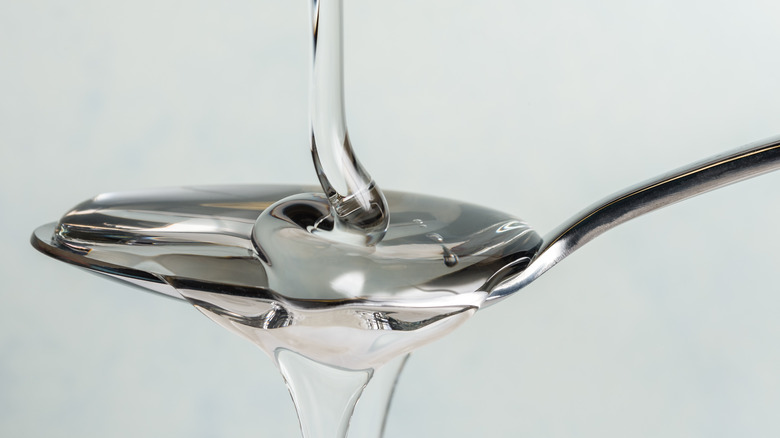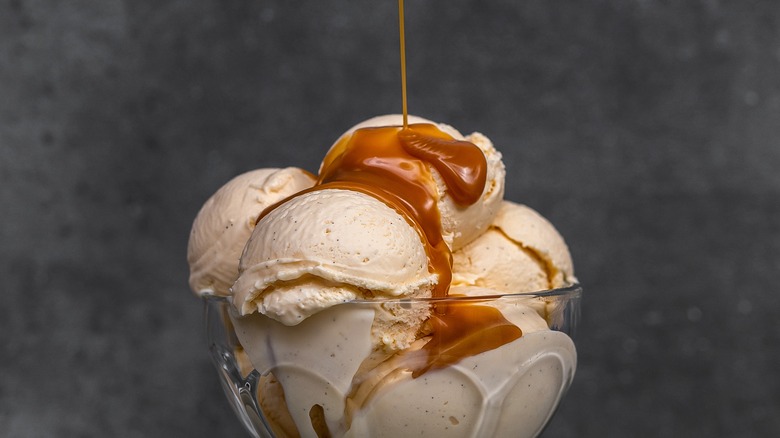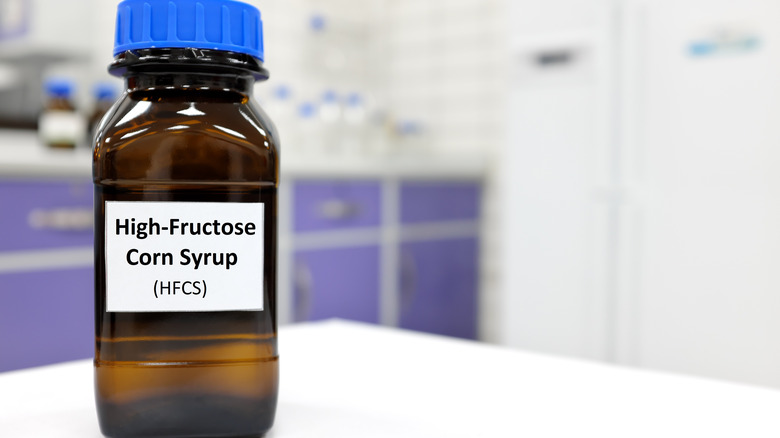What Is Corn Syrup And How Is It Used?
Corn syrup is a very common but widely misunderstood ingredient. This thick, liquid sweetener shows up in many desserts, but it can also cause a great deal of concern among consumers. You hear a lot in the news about the dangerous effects of high-fructose corn syrup, but it's rare that people actually take the time to explain what it is, and, most crucially, how it differs from regular corn syrup. With that in mind, it's high time we cleared up the confusion around corn syrup and what makes it different from its high-fructose counterpart.
Let's start with the obvious: corn syrup is made from corn, or more specifically, from cornstarch. According to Reader's Digest, corn syrup is made using a process called acid hydrolysis, in which cornstarch is mixed with water and a small amount of hydrochloric acid. That might sound a bit sketchy to you, but WebMD reminds us that hydrochloric acid is the same thing our stomachs contain for the purpose of breaking down food, and when it's mixed with cornstarch, it breaks down the starch molecules into glucose. Masterclass notes that there are two main varieties of corn syrup: light corn syrup, which is translucent and mildly sweet, and dark corn syrup, which has been further sweetened by the addition of molasses.
Uses of corn syrup
Corn syrup serves two purposes in food, including as a sweetener and as a thickening agent. Reader's Digest explains that corn syrup differs from regular cane sugar because it contains glucose, whereas sugar contains sucrose. The difference in the molecular structure of glucose means that it does not crystallize like sucrose does, a major advantage for confectioners. The Washington Post adds that corn syrup also prevents ice crystals from forming in ice creams and sorbets. Additionally, its smooth, glossy texture gives an attractive sheen to icings and other sweet glazes such as chocolate ganache and buttercream. Since corn syrup is only about 30-50% as sweet as granulated sugar, it can also be used in recipes where a gentler level of sweetness is desired.
One unexpected use of corn syrup is in the process of brewing beer. Food Network explains that some breweries use corn syrup to activate the yeast in their beer. Certain companies have even run advertising campaigns built around calling out competitors for making beer brewed with corn syrup, but this is really a non-issue, as the corn syrup is eliminated during the fermentation process. Of course, there's another reason that many companies use corn syrup over other types of sweeteners, but they aren't likely to publicize it. As Reader's Digest notes, corn syrup is a significantly cheaper option than cane sugar, helping manufacturers cut costs.
Corn syrup vs. high-fructose corn syrup
You've probably heard a great deal in recent years about high-fructose corn syrup, which is responsible for many of the added sugars in the American diet. Now we need to make a crucial distinction: high-fructose corn syrup is not the same as corn syrup. As we previously explained, regular corn syrup is made by converting cornstarch into glucose, but The Washington Post explains that high-fructose corn syrup involves treating corn syrup with additional enzymes that convert some of that glucose into fructose, a much sweeter form of sugar. Whereas regular corn syrup is only 30-50% as sweet as cane sugar, high-fructose corn syrup is 80-90% as sweet, and is still cheaper for manufacturers to use.
High-fructose corn syrup is not available at any grocery store, making it nearly inaccessible to home cooks. However, it does show up in a vast number of processed foods, and it's been linked to health concerns like obesity and Type 2 diabetes. Dr. Mark Hyman of The Cleveland Clinic explains that our bodies absorb fructose more quickly than regular sugar, and it triggers the production of triglyceride fats and cholesterol in our livers. It also increases your appetite, making it more challenging to regulate eating. Unfortunately, it's difficult to avoid high-fructose corn syrup altogether, as it shows up in over 80% of processed foods, but limiting the amount of processed food in your diet can mitigate its effects.


